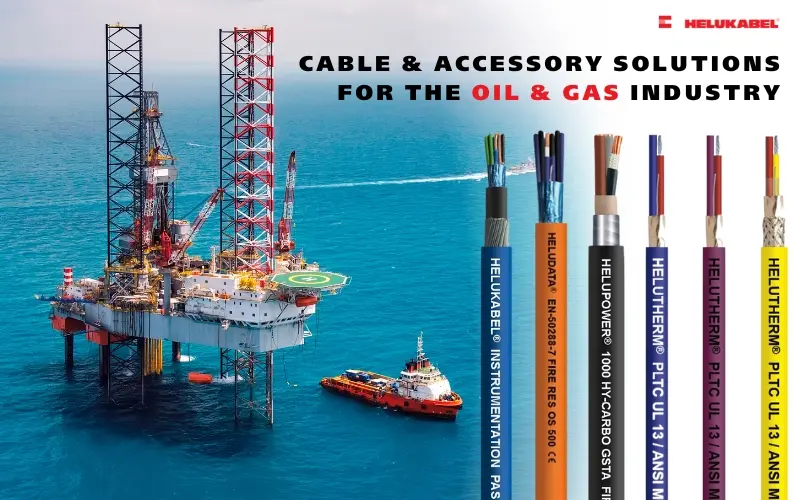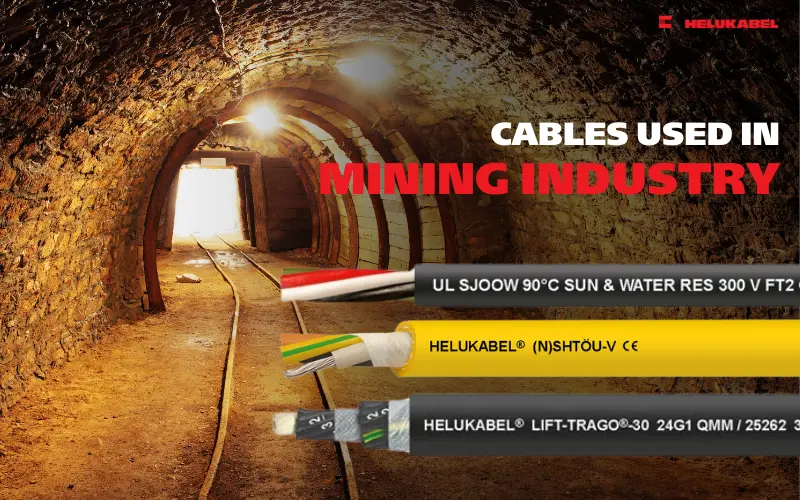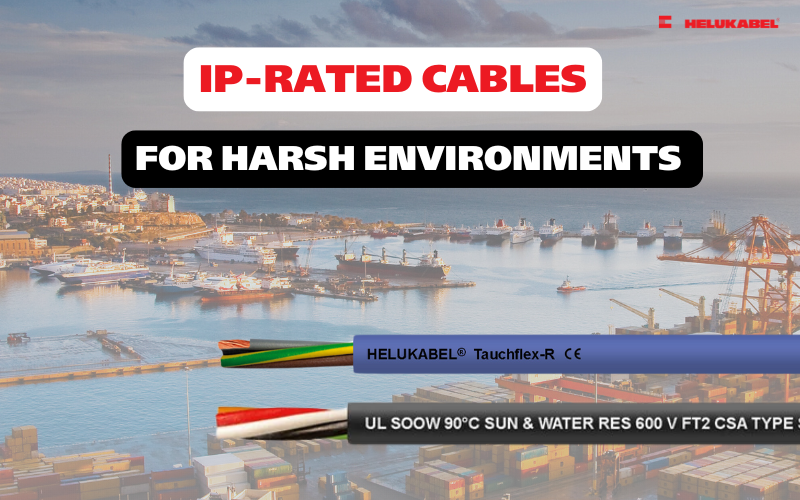EN 50288-7 standard for electrical cables in the oil and gas industry
EN 50288-7 is one of the most widely used standards regulating electrical cables in the oil and gas and chemical industries. Learn more about this essential standard in the article below.
In today’s increasingly complex and high-demand environments such as the oil and gas and chemical industries, electrical cables – as the main carriers for power and signal transmission – play a critical role in ensuring performance and quality. The EN 50288-7 cable standard has emerged as an indispensable choice in many industrial sectors, thanks to its outstanding features and wide applicability.
1. What is the EN 50288-7 standard?
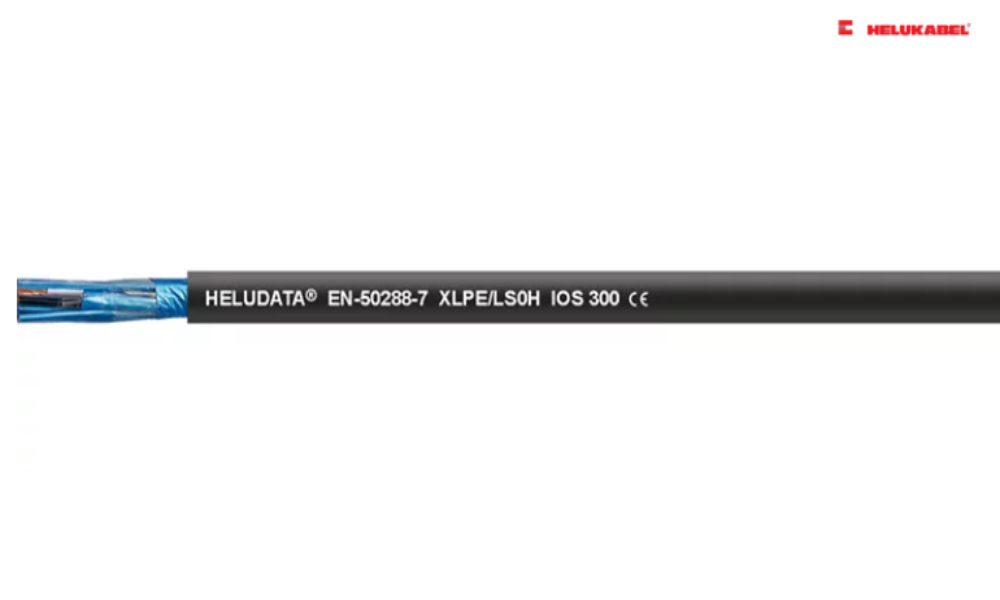
EN 50288-7 is a European standard specifically developed for instrumentation and control cables. In the UK, it is also referred to as BS EN 50288-7. It was introduced to replace the widely used BS 5308 standard. Although BS 5308 is still mentioned and some companies continue to manufacture and stock cables according to it – particularly the LSZH (Low Smoke Zero Halogen) variants – EN 50288-7 is gradually becoming the dominant standard.
Compared to its predecessor, EN 50288-7 introduces several updates in technical specifications, naming conventions, and product features, providing a more optimized and technically superior option. As a result, EN 50288-7 compliant cables are increasingly used in the oil and gas and chemical industries.
2. Advantages of EN 50288-7 cables for oil, gas, and chemical Industry
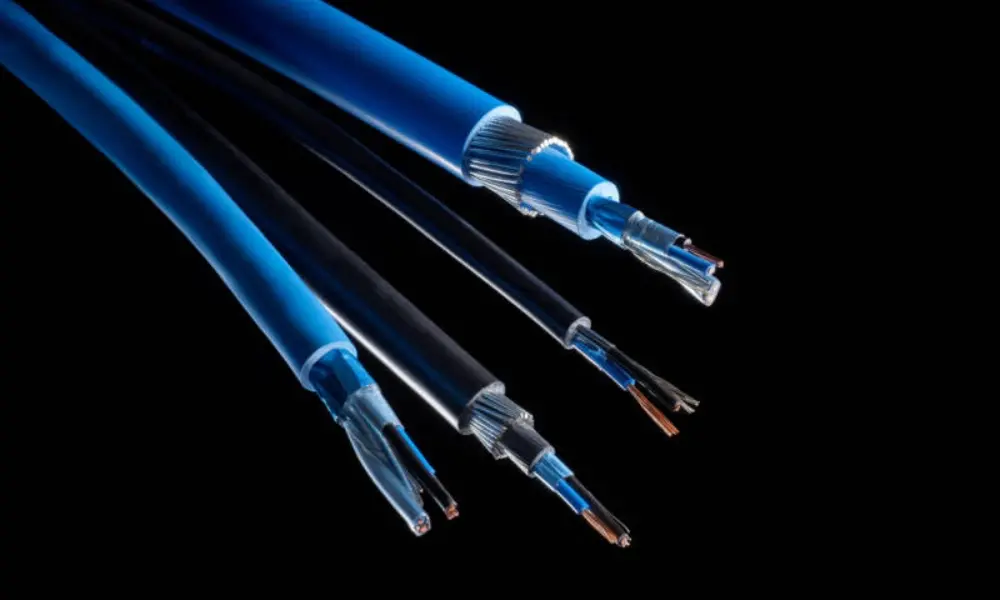
EN 50288-7 cables are available in multiple configurations including single pair, multi-pair, three-core, or four-core versions
2.1 Diverse construction options
EN 50288-7 cables are available in multiple configurations including single pair, multi-pair, three-core, or four-core versions. The conductors can be either solid or stranded copper, ensuring stable signal transmission even in harsh environments like offshore rigs and chemical plants.
2.2 Flexible conductor specifications
Users can choose conductor cross-sections ranging from 0.5 mm² to 2.5 mm², with options for:
- Class 1: solid copper
- Class 2: stranded copper
- Class 5: highly flexible copper
This flexibility allows the cables to meet various technical requirements in refineries, chemical factories, and offshore installations.
2.3 Excellent temperature resistance
EN 50288-7 cables operate reliably across a wide temperature range from 70°C to 105°C, depending on construction materials. This is especially beneficial in high-temperature, humid, or corrosive environments.

2.4 Multiple voltage options
Besides the standard 300V rating, EN 50288-7 cables are also available in 90V and 500V versions, accommodating diverse system and equipment voltage requirements.
2.5 High customizability
These cables can be customized to suit specific installation conditions. Optional features include:
- Braiding for EMI protection
- Armouring for mechanical protection
- Fire-resistant layers
- Chemical-resistant bedding
Unlike older standards like BS 5308, EN 50288-7 does not limit material selection, allowing users to specify oil, corrosion, or chemical-resistant materials for harsh industrial conditions.
2.6 Optimized dimensions and EMC performance
Compared to equivalent BS 5308 cables, EN 50288-7 cables have smaller overall diameters and reduced sheath thickness, resulting in lighter weight and easier installation – particularly in space-constrained environments.
Enhanced overall and individual shielding (PIMF) also improves electromagnetic compatibility (EMC), crucial in electronics-dense and automated settings.
3. Construction of EN 50288-7 cables
| Components | Specification |
| Conductor | Class 1, class 2, or class 5 |
| Insulation | PVC, PE, or XLPE |
| Core structure | Twisted pairs, triples, or quads |
| Individual screen | Aluminium/PET laminated tape |
| Drain wire | Tinned copper |
| Overall screen | Aluminium/PET tape over tinned copper drain wire |
| Inner sheath | PVC, PE, or XLPE |
| Armour | Typically SWA (steel wire armour) |
| Outer sheath | PVC, PE, or LSZH, depending on fire and chemical resistance needs |
4. Applications of EN 50288-7 cables

4.1 Industrial automation
EN 50288-7 cables are widely used in automated production lines to connect sensors, controllers, and actuators, ensuring stable signal transmission. In automotive plants, they support operations from component inspection to robotic arm control.
4.2 Measurement and control system
In large-scale measurement and control systems - particularly in the oil and gas industry, chemical plants, and the energy sector - EN 50288-7 cables are used to transmit both analog and digital signals from field devices to the central control system. For example, in an oil refinery, these cables connect temperature, pressure, and flow sensors to the control system in the central control room, delivering real-time production data that enables precise and efficient process control.
4.3 Precision instrumentation and electronics
EN 50288-7 cables are also well-suited for supplying power and transmitting signals to electronic devices, analytical instruments, and precision measurement equipment. For instance, in laboratories equipped with high-precision testing systems, the cable’s stable power transmission and excellent electromagnetic interference (EMI) shielding help ensure the accuracy and reliability of measurement results, while minimizing the risk of errors caused by electromagnetic disturbances.
5. HELUKABEL’s EN 50288-7 compliant cable solutions for the oil, gas, and chemical industries
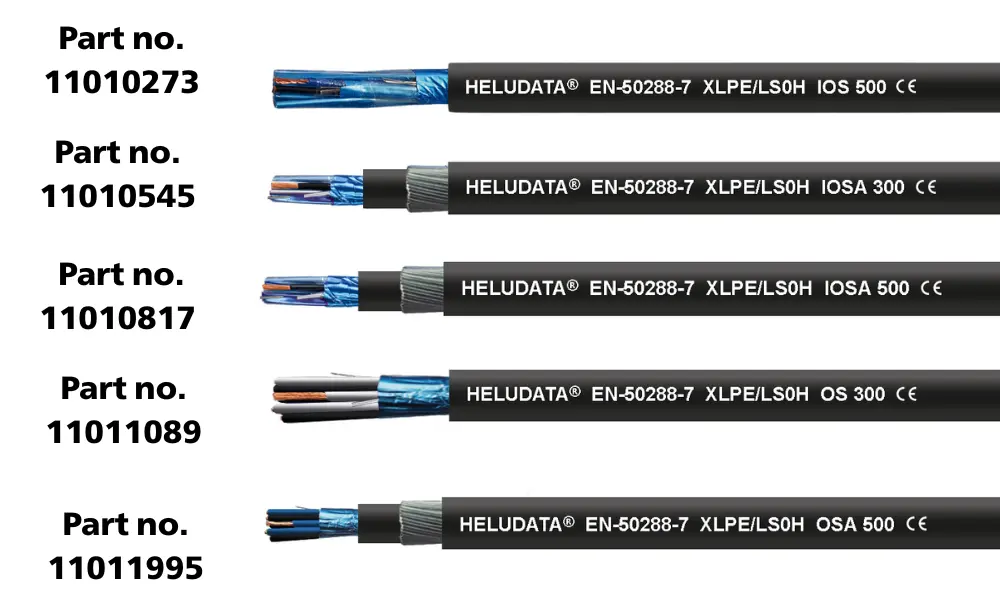
5.1 HELUDATA EN-50288-7 instrumentation cables
HELUKABEL offers a wide range of EN 50288-7 compliant instrumentation cables, available in various constructions and materials such as OS, IOS, OSA, and IOSA. These cables are specifically designed for the transmission of both analog and digital signals in harsh industrial environments—including oil and gas extraction, petrochemical processing, and gas distribution systems.
- HELUDATA® EN-50288-7 PVC/PVC OS 300
- HELUDATA® EN-50288-7 PVC/PVC OSA 500
- HELUDATA® EN-50288-7 XLPE/PVC IOS 500
- HELUDATA® EN-50288-7 XLPE/LS0H IOSA 500
- HELUDATA® EN-50288-7 XLPE/LS0H IOS 500
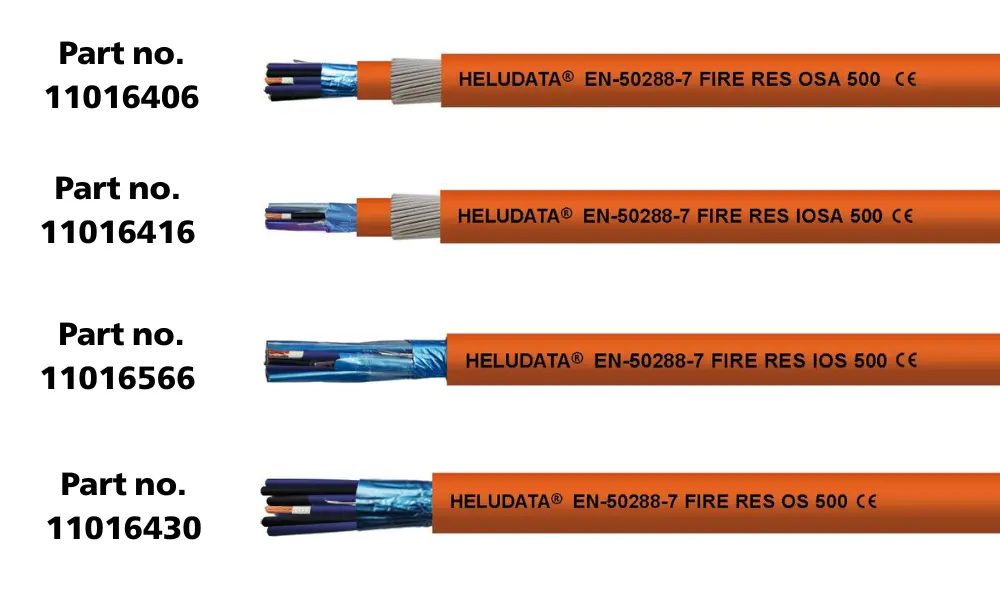
5.2 Fire-resistant cables
- HELUDATA® EN-50288-7 FIRE RES OS 500
- HELUDATA® EN-50288-7 FIRE RES IOS 500
- HELUDATA® EN-50288-7 FIRE RES OSA 500
- HELUDATA® EN-50288-7 FIRE RES IOSA 500
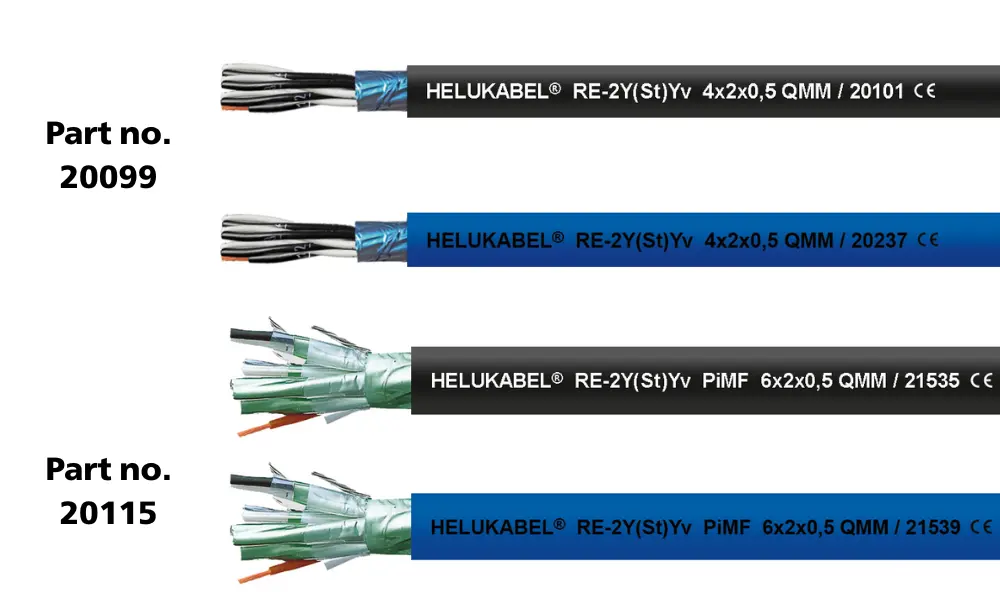
5.3 Other EN 50288-7 compliant cables
- RE-2Y(St)Yv (20099)
- RE-2Y(St)Yv PiMF (20115)
These two cable types are commonly used in data processing and industrial process control systems, especially in environments where stable and accurate signal transmission is critical. When installed as fixed wiring, they are suitable for use in dry or damp indoor areas, outdoor installations, and underground cable networks.
6. FAQs on cables for the oil and gas industry
6.1 Understanding OS / IOS / OSA / IOSA cable designations
Today’s market offers a wide variety of instrumentation cables manufactured according to different standards. Each standard has its own terminology and labeling system, which can sometimes lead to confusion. Below are the most common designations under the EN (European) standard:
- OS (Overall Screened): All pairs, triads, or quads are collectively shielded with an aluminium/plastic foil to provide electromagnetic interference protection.
- IOS (Individual and Overall Screened): Each pair, triad, or quad is individually shielded with aluminium/plastic foil, and then all are additionally covered by an overall screen.
- OSA (Overall Screened Armoured): Similar to OS, but with an added inner sheath and steel wire armour (SWA) for mechanical protection.
- IOSA (Individual and Overall Screened Armoured): Combines both individual and overall screening with an inner sheath and steel wire armour, providing maximum protection and EMI resistance.
6.2 What is the PAS 5308 standard for instrumentation cables?
PAS 5308 is a British standard for instrumentation cables that typically include steel wire armour (SWA) for mechanical protection. These cables are classified as Part 1 Type 2 and are widely used in the oil and gas industry, petrochemical plants, and other applications requiring stable signal transmission for control and monitoring.
Although PAS 5308 was withdrawn over a decade ago and replaced by the harmonized European standard EN 50288-7, PAS 5308-compliant cables are still widely used across the globe and are frequently specified in major industrial projects.
- HELUDATA® PAS 5308 PE/PVC IAM/CAM
- HELUDATA® PAS 5308 PE/PVC CAM/SWA
- HELUDATA® PAS 5308 PE/PVC IAM/CAM/SWA
- HELUDATA® PAS 5308 PVC/PVC IAM/CAM
- HELUDATA® PAS 5308 PVC/PVC IAM/CAM/SWA
6.3 What are PLTC UL 13 instrumentation cables?
UL 13 defines the standard for Power-Limited Tray Cables (PLTC) used for instrumentation and control applications in the United States, similar to EN 50288-7 in Europe and PAS 5308 in the UK.
Some PLTC UL 13-compliant cables from HELUKABEL include:
- HELUDATA® PLTC UL13 PVC/PVC OS 300
- HELUDATA® PLTC UL13 PVC/PVC IOS 300
- HELUDATA® PLTC UL13 XLPE/LS0H OSA 300
- HELUDATA® PLTC UL13 XLPE/LS0H IOSA 300
6.4 What do the cable markings CAM and IAM mean?
In PAS 5308-compliant cable types, you may encounter markings such as CAM and IAM. These refer to the cable’s shielding structure:
- OS = CAM (collective screen)
- IOS = IAM/CAM (individual and collective screen)
6.5 What are thermocouple cables?
Thermocouple cables are specialized instrumentation cables used to transmit temperature measurement signals in industrial systems.
In terms of construction, a thermocouple cable consists of a pair of conductors - one positive and one negative - made from two dissimilar metals, depending on the thermocouple type (e.g., Type K, J, T, etc.). The difference in metal composition generates a thermoelectric voltage, allowing for accurate temperature measurement.
- HELUTHERM® PLTC UL 13 / ANSI MC 96.1 PVC/PVC
- HELUTHERM® PLTC UL 13 / ANSI MC 96.1 XLPE/LS0H
If you still have any concerns or questions, don't hesitate to reach out to HELUKABEL Vietnam's engineering team promptly for detailed assistance.
HELUKABEL® Vietnam
| Address | 905, Nguyen Kiem Street, Hanh Thong Ward, Ho Chi Minh City 700000, Vietnam |
| info@helukabel.com.vn | |
| Hotline | +84 28 77755578 |
| Website | www.helukabel.com.vn |
| Discover our products and place orders | Tiki | Shopee | Lazada | Product finder |
| Follow us on | Facebook | LinkedIn | Instagram | Youtube | Zalo | WhatsApp | Tiktok | Spotify |

